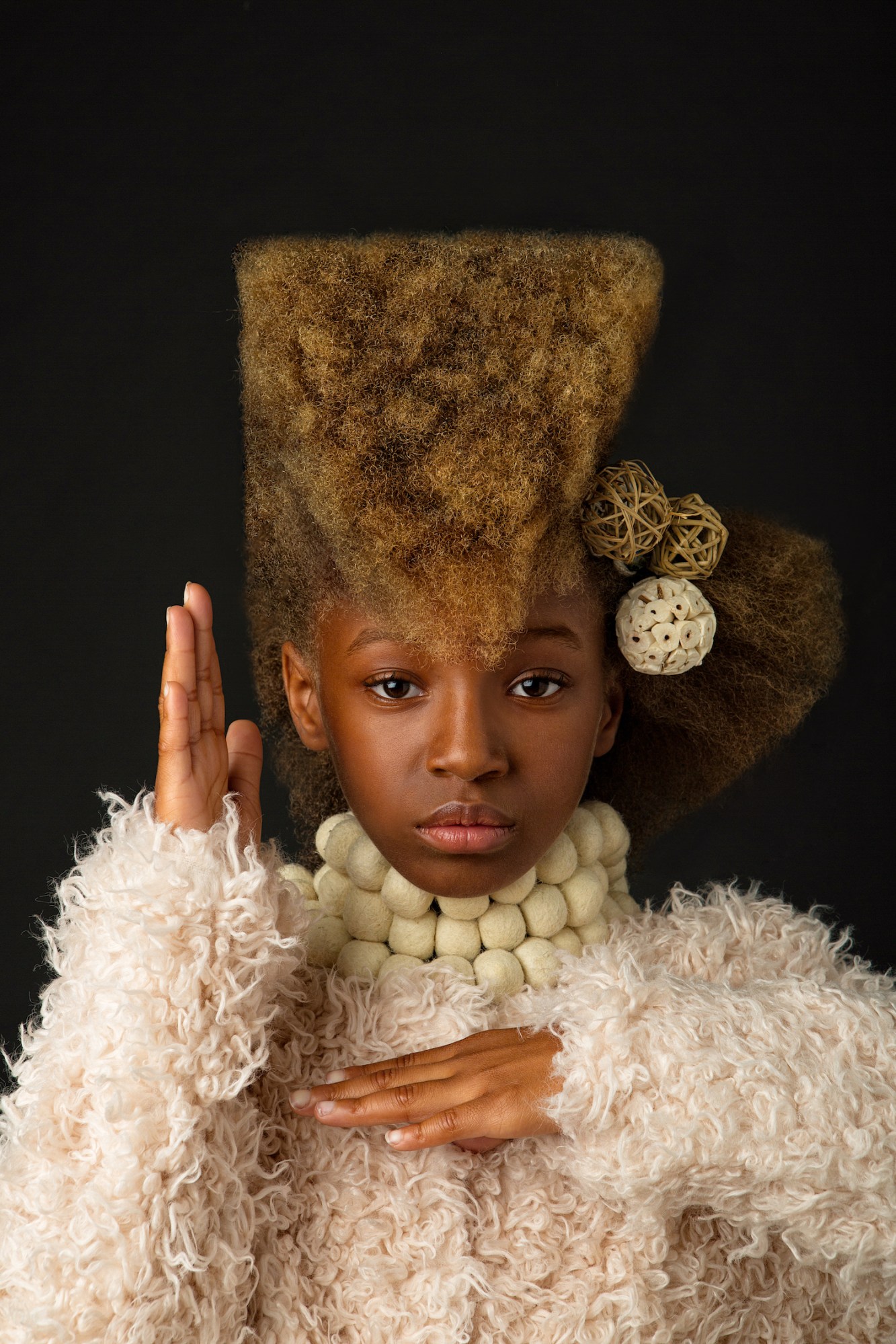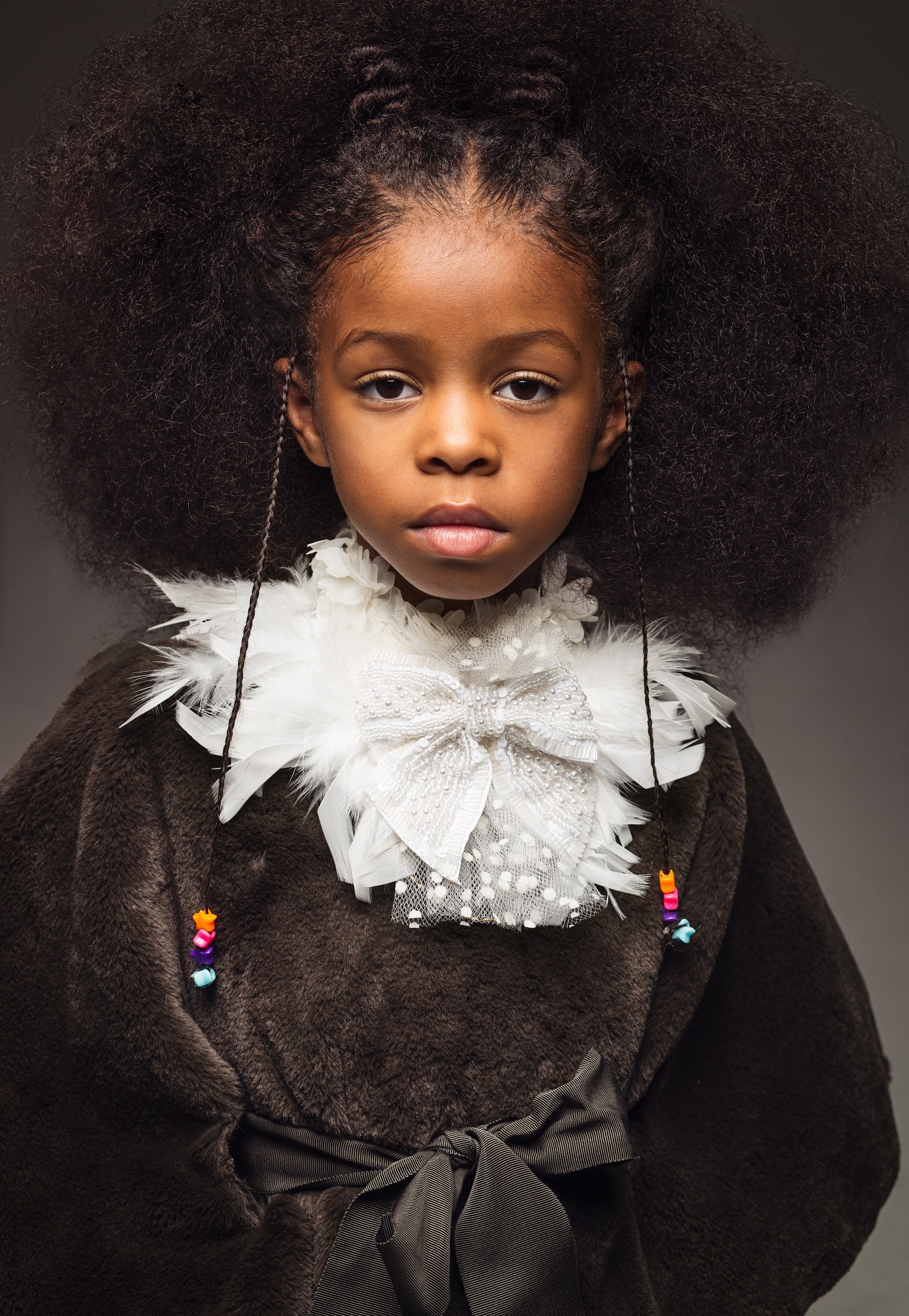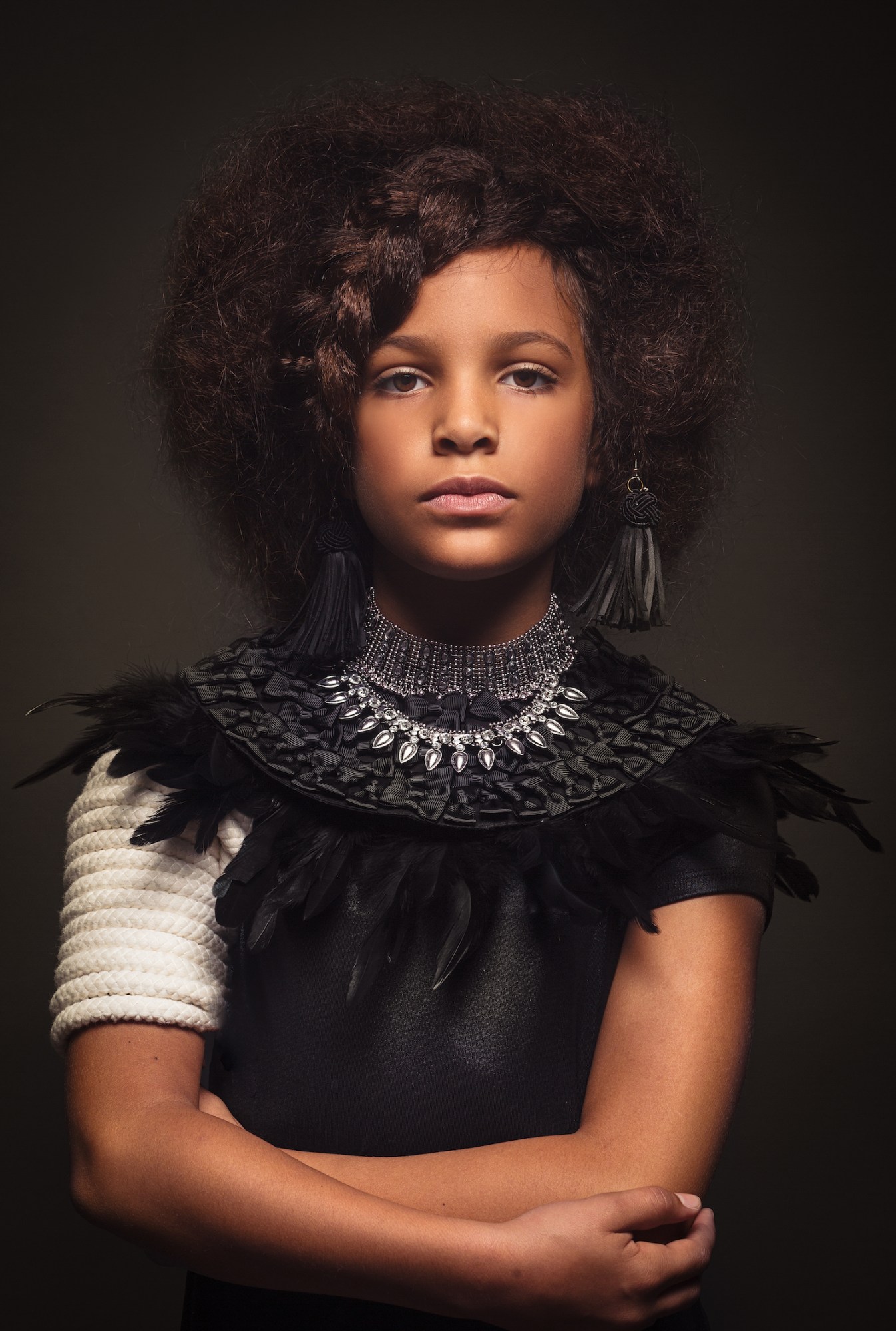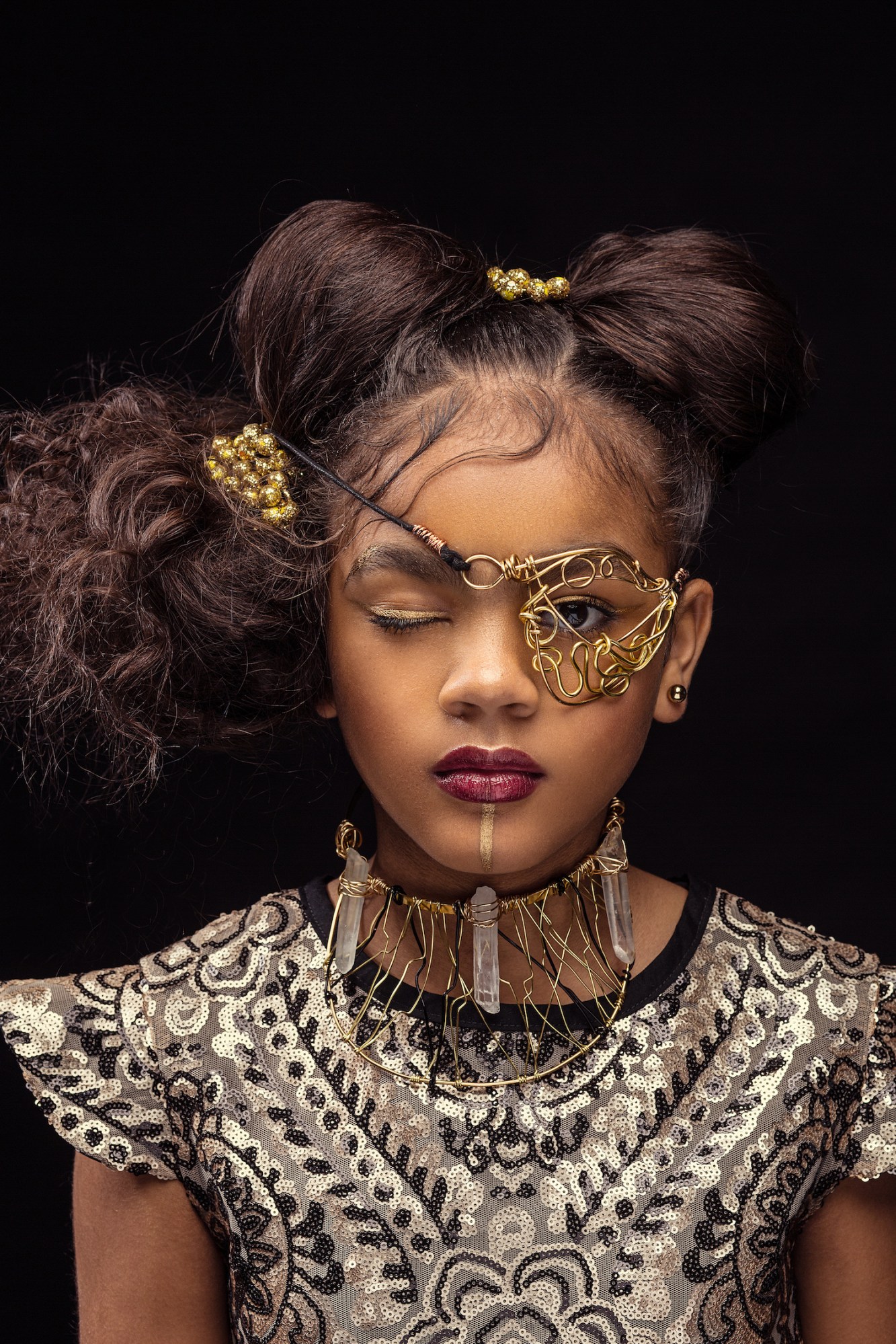The black past is unfairly limited in scope. When we look back at our history, pop culture usually only gives us two options: slave films like 12 Years A Slave or Civil Rights biopics like Selma and The Help. These works are important, yes, but there is so much more to our story. The African diaspora has touched many sections of the world since slave trade began in the 15th century. For example, the great-grandmother of esteemed Russian writer Alexander Pushkin was an African page kidnapped and gifted to Peter the Great. See? We’re even in Russia.
Wife-and-husband photography duo Regis and Kahran Bethencourt of CreativeSoul Studio are illustrating the historical and global expansiveness of blackness. Based in Atlanta, the two photograph black kids wearing ornate costumes inspired by periods typically associated with whiteness. The girl’s hair blossom out into avant-garde, natural hairstyles. And they come from all over the world: Cuba, Amsterdam, France. It highlights the fact, as my mom loves to say, that “black people are everywhere.” They have shot subjects in Cuba, Amsterdam, and France.
The photos inspire both black children and adults to push the boundaries of what blackness has been and can become. Kahran says she and her husband had to believe push against disbelievers themselves, people telling them what they could and couldn’t accomplish. “There are so many people who said, “Oh, you’re not going to make any money if you just focus on black kids,’” Kharan tells i-D. “We had to say that whether or not we make money off of it, this is what we’re going to do. I think our business flourished because of that because we were able to stand out.”
Regis and Kahran’s photos go beyond capturing a good shot. They have the power to make the child subjects fall in love with their natural hairstyles. “It’s their innocence that we love,” she says, explaining why she and her husband focus their eye on them. “We love that it can be surprising what you get from them sometimes, things you wouldn’t expect.”
Here, Kahran talks to i-D about showing the myriad possibilities of black hair, and the duo’s plans to embark on a year-long project, photographing black children from around the world.

What was the initial inspiration for these photos? There’s so much going on with the costumes and historical references.
We did the afro art series to show the beauty and versatility of afro hair. We wanted to inspire and empower kids around the world to love their natural hair, curls, and culture. We decided to showcase it in a variety of ways. We pulled from the past, like the baroque era and steampunk. The pictures are of kids with afro hairstyles that you wouldn’t expect. We wanted to not be limited by a set time period, and showcase kids looking royal and regal in a a lot of different ways.

What does it mean to insert black kids into these time periods? Especially ones that are typically associated with blackness, like the Renaissance era.
I think it’s huge. For so long we haven’t had the opportunity to see ourselves represented this way in the media. What our brand tries to do is show these kids in a different light, in a way that you haven’t seen them before. So you can see that not only is our hair and culture is beautiful. But we also want kids to be inspired and see that they can do anything that they want to.

Where do you find your subjects?
Everywhere! Social media has been big for us and plays a really important role whenever we are traveling, especially across the US. In some places, like Cuba, we were not able to find kids before we went, so we really had to talk to people face to face on the streets. I think once people see our work and what we do, a lot of them are excited to be part of it.

How do the kids and their parents react to the experience of these grandiose photo shoots?
We’ve had such great and positive feedback. Sometimes the kids have not seen their hair in all these different ways. Parents will tell us their kids were shy about wearing their natural hair out to school, and after the shoots the kids want to keep the hairstyles and preserve it for the next day. They feel a little more empowered and confident.

How do the costumes and hairstyles come together?
When we travel to different locations, we will try to come up with a theme that we’ll do for the shoots there. Then we do a big mood board where we come up with a concept and we’ll give direction to our team so they have a feel for the overall vision. We don’t get into specifics of what exactly each person is going to look like, we just let it happen naturally on set. On set, we will talk to the parents and get a feel for the direction we want to go. Then we just let the magic happen.

What are you and your husband working on next?
Our major thing this year is our afro art coffee table book. We’re starting in Europe and photographing in a few countries there. I’m excited about that because it gives us room to expand what we’ve been doing. We’re going to divide the book into three sections: past, present, future.

Wow, that’s incredible! What is it like to shoot black kids from all around the world? I think even as African-Americans we forget there are so many other countries filled with people from the black diaspora.
When we first traveled to other countries in 2016, for us it was huge to be able to see, ‘Oh gosh, here in France they’re kind of having the same issues as us’ or ‘There’s some folks who look like us in Amsterdam’. I think it’ll be really good for kids to see that. It is easy to get boxed in and see your own world and it’s so good to see there is so much out there.
As a creative, I never want to be too boxed in, and this book gives us the chance to say yes we can pull from our past, but we also have ideas about how we want to see ourselves in the future and we can talk about what’s going on today.



